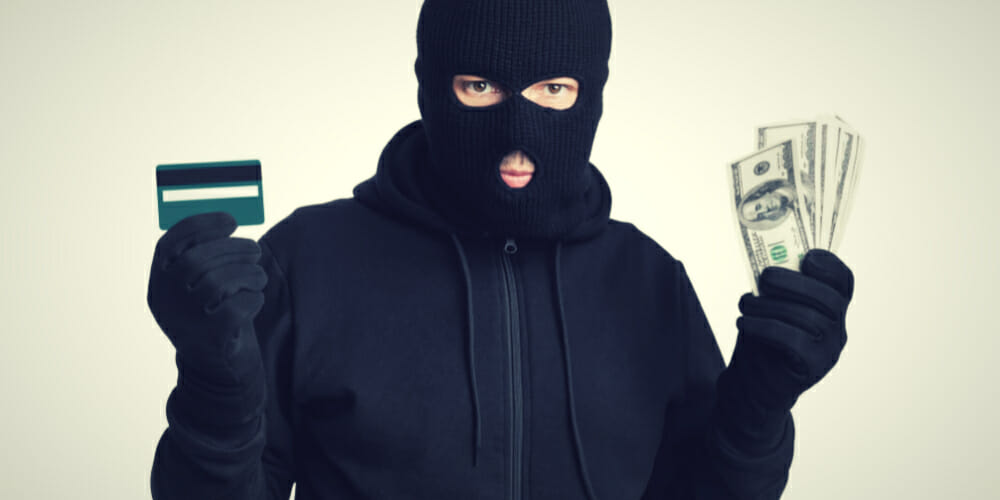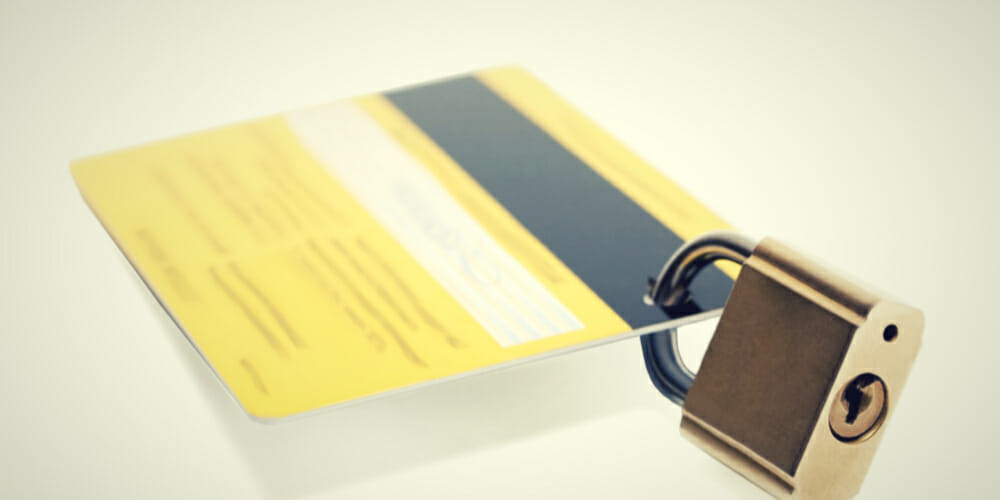Debit cards are a convenient and widely used payment method, making it easy to purchase goods and services online or in person. But while they provide many benefits, they also come with certain risks, such as the possibility of losing your card or getting it stolen by an unauthorized user. So can you track a debit card if it gets lost or stolen?
There is no physical way to track these cards, but there are some steps to ensure your debit card information stays secure and that you can retrieve it if it is lost or stolen. These might include taking advantage of security features like PINs and chip readers, monitoring your account activity regularly, and contacting your card issuer immediately if you notice anything suspicious.
This article will further discuss how to protect your cards and what to do when one loses the card. How to keep your data secure and all the other queries are popping into your head right now. Read the article till the end to find out all the answers.
Security Features of a Debit Card/Credit Card
Debit cards are convenient to make purchases, but without proper security measures in place, they can be easily exploited by criminals. Fortunately, debit cards typically come with several security features that help protect your account and allow you to track any suspicious activity.
Transaction Limits
Debit cards are a popular form of payment, providing users with the convenience and security of electronic transactions. One of the critical security features of debit cards is the ability to track lost debit card transactions, allowing you to keep tabs on your spending and ensure that no fraudulent purchases are made using your card.
A transaction limit will help you to get an alert message when a huge transaction is made with your card without your consent. Transaction limits will restrict the range of your loss when you lose your debit card. This check and balance prevent the risk of fraud.
There are many different methods for tracking debit card transactions. From using online banking portals that allow you to view your account activity in real-time to setting up alerts on your mobile device, you are notified each time a transaction is made.
PIN Number
Personal Identification Numbers (PINs) can help to decrease fraud involving credit cards, debit cards, and even ATMs. Typically, when you give your customers these cards, you also provide them a PIN or the option to select their PIN. This feature offers an additional layer of security against fraudulent transactions.
The card reader reads information when someone uses a debit card to make a transaction or an ATM card to make a cash withdrawal. The EMV chip generates a one-time code with the information required to access the customer’s account.
The unique PIN is required during transactions to verify your identity and approve the transaction. PINs also help to prevent unauthorized access to your account, as they are typically not stored with your other personal information or card details.
CVV
CVV, or card verification value, is a three-digit number that is written on the back of most debit and credit cards. This number helps to protect your account by providing an extra layer of security when making purchases online.
However, many criminals have found ways to steal this information to make fraudulent transactions. For example, they may use specialized software to illegally scan and skim the magnetic stripe on your card, capturing all of the information needed to make unauthorized purchases.
It is essential to keep your CVV number safe and secure. You can use strong passwords for your online accounts and avoid public Wi-Fi networks whenever possible. Enrolling in an identity theft protection service that can monitor your personal information for any signs of suspicious activity may also be helpful.
Signatures
Signatures on debit cards are an essential security feature that helps protect your money. When you use a card to make purchases, the signature verifies your identity as the cardholder. It helps ensure that you only spend what is available in your account. Unfortunately, even with this extra layer of security, there is still a risk of fraud.
A signature on a debit card receipt is also helpful in preventing disputes with the merchant. If there is a variance in what you ordered and received, your signature on the receipt can prove that you made a purchase and agreed to accept it as-is. Without this information, proving your case may be more challenging if you disagree with the merchant.
What is a Smart Chip/EMV Chip?
A Smart Chip, also known as an EMV chip, is a small computer chip embedded in debit cards and credit cards. Unlike traditional magnetic stripe cards, which store your card information in text on the magnetic strip, EMV chips encrypt this data to make it more secure.
EMV chips are much more difficult to counterfeit. In addition to encrypting your card information, EMV chips also contain additional security features that make transactions more secure and reduce merchants’ fraud risk.
For example, you may have noticed that many retailers now require you to put your debit or credit card into a terminal slot when making a purchase. It is known as the “chip-and-pin” method, which requires you to enter a PIN for your transaction.
While it may seem that an EMV chip would make tracking your purchases and transactions more accessible, this technology offers more privacy, protection, and anonymity than magnetic stripe cards. Overall, EMV chips are an essential step forward in the fight against card fraud.
Upgrade To Smart Chip
If you’re interested in upgrading to a debit or credit card with a Smart Chip, check with your bank or financial institution to see if they offer these cards. And remember, as EMV technology grows in popularity, it’s essential to be aware of the latest scams and security risks that may impact your finances.
How Does it Work?
When a card is placed into a slot on an EMV-enabled terminal, the information on the integrated chip is read and verified. Card data is then processed for payment authorization just like when using a magnetic stripe, with the main distinction being that a chip card creates a one-time code for every transaction while a standard magnetic stripe card does not.
A contactless payment method is another option for using an EMV card. The enabled card may be held, waved, or tapped against a payment terminal to complete the transaction using near-field communication (NFC).
Can Banks Track Your Debit Card/Credit Card?
Regarding tracking your physical debit or credit card, the answer is no. Debit or credit cards are not yet physically tracked. Although they are not designed to locate the card, their smart chips will assist protect your personal information. However, alternatives are available, such as the Visa Mobile Location Confirmation app. The trade-off for these choices is a loss of privacy.
A new card can be a better choice than trying to locate a lost or stolen card. The information on the card has been made public if it was left at a store or elsewhere. So even if you find it, it will need to be changed for security. Always notify missing cards as soon as you can to prevent being held responsible for fraud.
Visa Card Mobile Location Confirmation
As the name suggests, mobile location confirmation is a service that verifies your current location based on data collected from your phone’s built-in GPS chip or network-based cell tower triangulation. Using this data, the service is used to determine where you are, and some providers can even provide you with details about local businesses and attractions in the area.
Many banks offer mobile location confirmation services to their customers as an added security measure for debit card transactions. These services track your phone’s location daily and provide alerts if it is detected outside a specified range of your registered home address. It can help prevent unauthorized purchases, which are automatically declined if your phone’s location is not recorded as being within this specified range.
Although it does not guarantee security against all fraudulent activity, mobile location confirmation can be a valuable addition to the fraud detection measures already in place with debit cards. And for most people, it is a simple and convenient way to ensure the safety of their money.
Things You Should Do After a Lost/Stolen Debit Card/Credit Card
When your card is lost or stolen, it can be a stressful and confusing experience. To make matters worse, you may have very little time to report the card as lost or stolen before someone has access to your hard-earned money through your account. However, You can easily avoid this situation if you know how to protect your debit card from being used by someone else and what to do when it happens.
Call Your Bank
Call your bank immediately if you lose or have your debit card stolen. Your bank can cancel the card, and you can receive a new one with a different number, helping to protect your finances from fraud.
If you use online banking, you may be able to track the card in real-time, which can help speed up the process of canceling the card. Most banks also have 24/7 customer service lines you can call to report a stolen debit card, which is often available in multiple languages.
Freeze Your Debit Card & Lock Your Account
With the rise in debit card fraud, it’s essential to take steps to protect your account from unauthorized use. One of the effective ways to do this is by freezing or locking your debit card. When you lock your debit card, your account will be flagged as high-risk, which can make it more difficult for thieves to use your card without authorization.
Moreover, When you freeze your debit card, you will prevent it from being used for purchases or ATM withdrawals. It helps to protect your account if your card has fallen into the wrong hands since thieves won’t be able to use it without first unfreezing it.
Monitor Bank and Card Statements
Being vigilant and developing secure payment card practices ourselves is one strategy to lower the occurrence of fraud. The secret to identifying card fraud lies in these paper statements (or, increasingly, scrollable internet transaction histories). If they are carefully examined, they can indicate whether a transaction was approved or not, enabling us to spot fraud early on.
One essential step to track a debit card is to sign up for mobile alerts, pay close attention to your transactions, and practice proper due diligence. It might include regularly checking your bank and card statements, monitoring your credit score, and being aware of any unusual activity on your account.
Changing your account authorization settings can be an effective way to prevent debit card fraud. Such settings control how and where your card can be used by restricting certain transactions, such as online purchases or ATM withdrawals.
You can set up authorization settings for your debit card in a few different ways. The first is through your bank account or debit card issuer, which is usually the easiest and most effective option. The other way is to use a third-party debit card authorization service, which uses additional technology to monitor your transactions and can help you prevent unauthorized purchases from happening.
How to Protect Yourself from Debit Card Theft & Fraud?
If you are thinking about how to protect yourself from debit card theft and fraud, you will be relaxed knowing that some tools are available to help keep your information safe.
Always Protect Your Physical Card
Keep your physical card in your wallet or the zipped pocket of your bag. You should avoid placing your card at random places, where there is a high chance of forgetting it. Or else, a thief might get ahold of your card and end up stealing your credit and identity.
Only Use ATMs Owned by Banks
Debit card scams often occur through ATMs, either by installing hidden cameras or card skimmers to capture your account information. However, using bank ATMs helps protect you from these scams because they are equipped with security measures like camera monitoring and advanced fraud detection systems that can help detect potential threats before they cause damage to your account.
So if you want to stay on top of your debit card usage and avoid potential scams, it is best to stick with bank ATMs whenever possible. Not only will this help keep your account secure, but it can also save you time by helping you complete transactions quickly and easily.
Use Mobile App Payments
Mobile apps have made it easier to make payments online, and many users now rely on them for everyday transactions. One of the most popular ways of mobile payment is using a debit card through an app. With this method, users can be sure they are making secure, reliable payments without worrying about fraud or other setbacks. “The beauty of it is instant,” said Ted Rossman, senior industry analyst at Bankrate.com.
There are several benefits to using mobile payments through apps, including the ability to track your transactions in real-time. It can keep you on top of your spending and ensure you aren’t overcharged or paying for anything fraudulent. Plus, many apps allow users to add additional security features like PINs or fingerprint access for an added layer of protection.
Use Retailers that Use Chip Readers
Nearly every business can be the target of a scam, but since the EMV chip was introduced in recent years, card-present businesses have been able to breathe a little easier. This small piece of hardware has significantly contributed to lowering fraud from duplicate cards and other time-tested techniques that take advantage of flaws in more antiquated technology, such as magnetic strips.
The EMV chip confirms the card’s legitimacy and enables customers to authorize transactions using encrypted PINs. EMV chips make credit card data far more difficult to steal, and thieves cannot produce counterfeit cards with working EMV chips. Retailers can screen out the most pervasive types of credit card fraud by requiring the customer to use EMV chip-verified transactions at the time of sale.
Protect Your Debit Card & Its Information
- Sign right away. Sign the back of your debit card as soon as it arrives in the mail, then store it safely.
- Keep Your Pin in mind. Your identification number (PIN) should not be written down and carried on your person.
- Treat your cards like cash by protecting them.
- Please save your receipt after taking it. Always verify the purchase amount on sales coupons before signing them.
- Immediately notify a stolen or misplaced card.
- When making a purchase, keep an eye on your credit card. Keep your card in sight since providing it to someone is like giving them cash. After every purchase, make sure you receive your card back.
Use a Virtual Number
Using a virtual number for online purchases is a great way to protect yourself from debit card theft and fraud. You can create a unique, temporary card number for each transaction with a virtual number. Even if your information is compromised during one purchase, your actual debit card number will remain safe. Plus, many virtual numbers offer added security features such as alerts and spending limits.
So not only will you be protected from theft and fraud, and you can easily monitor your purchases and ensure that everything is legitimate. Using a virtual number is a simple step toward keeping your finances secure. Try it out for your next online purchase and experience the peace of mind it brings.
Monitor Bank and Card Statements
One of the great ways to protect your debit card from theft and fraud is by regularly monitoring your bank and card statements. It means taking the time to review each transaction and ensuring that all charges are legitimate.
If you notice any unfamiliar or suspicious activity, you must contact your financial institution and report the issue immediately. You can also take preventative measures, such as regularly checking your credit report for unauthorized accounts, choosing strong and unique online banking passwords, and never giving out financial information over the phone or the internet.
FAQs
Do Debit Card Fraudsters Get Caught?
While it may seem like debit card fraudsters can get away with their crimes, the reality is that some of them do eventually get caught. Law enforcement agencies have sophisticated methods and technology to track and prosecute these criminals.
Financial institutions also have fraud detection systems to help identify suspicious or fraudulent activity on customer accounts. Of course, this doesn’t mean that all fraudsters will get caught; many slip through the cracks and successfully get away with their crimes. But rest assured that measures are being taken to prevent and punish debit card fraud.
What Can My Bank Do if I Get Scammed?
If you have been scammed, the first step you should take is to contact your bank immediately. Your bank may be able to stop any fraudulent transactions and help recover any stolen funds.
Your bank may also be able to file a report with the authorities and provide any necessary documentation for an investigation. Remember that recovering lost funds may not always be possible, but taking swift action can help minimize the damage.
Can Banks Track Online Purchases?
While it might seem like banks have the power to track all of our online purchases, the reality is a bit more complicated. First, banks typically only track the transactions that go through your account, so if you use cash or a different credit card for your online purchase, it may not show up on your bank statement.
Ultimately, while banks may not be able to track every single one of your online purchases, they do have the ability to follow some of them and can help protect your account from fraudulent activity.
Will the Bank Replace Stolen Money?
In most cases, yes, the bank will replace stolen money as long as you report the theft promptly and provide any necessary documentation. It’s important to remember that banks have fraud departments in place to handle these types of situations.
However, there may be certain circumstances where the bank cannot fully reimburse you for the stolen funds. It could include if you were negligent in protecting your account information or failed to report the theft promptly.
Conclusion
As technology continues to improve, we are seeing more and more ways to protect against debit card fraud. But still, there is no 100% surety, so consumers should be vigilant while using their debit or credit card.
Although credit cards have made life much easier, you can pay anywhere with just a swipe, but still, you have to protect your card from being stolen or misused. All the preventive measures are already discussed in the article, and the immediate step you must take when your card goes missing. So read it thoroughly and enjoy your purchase.













